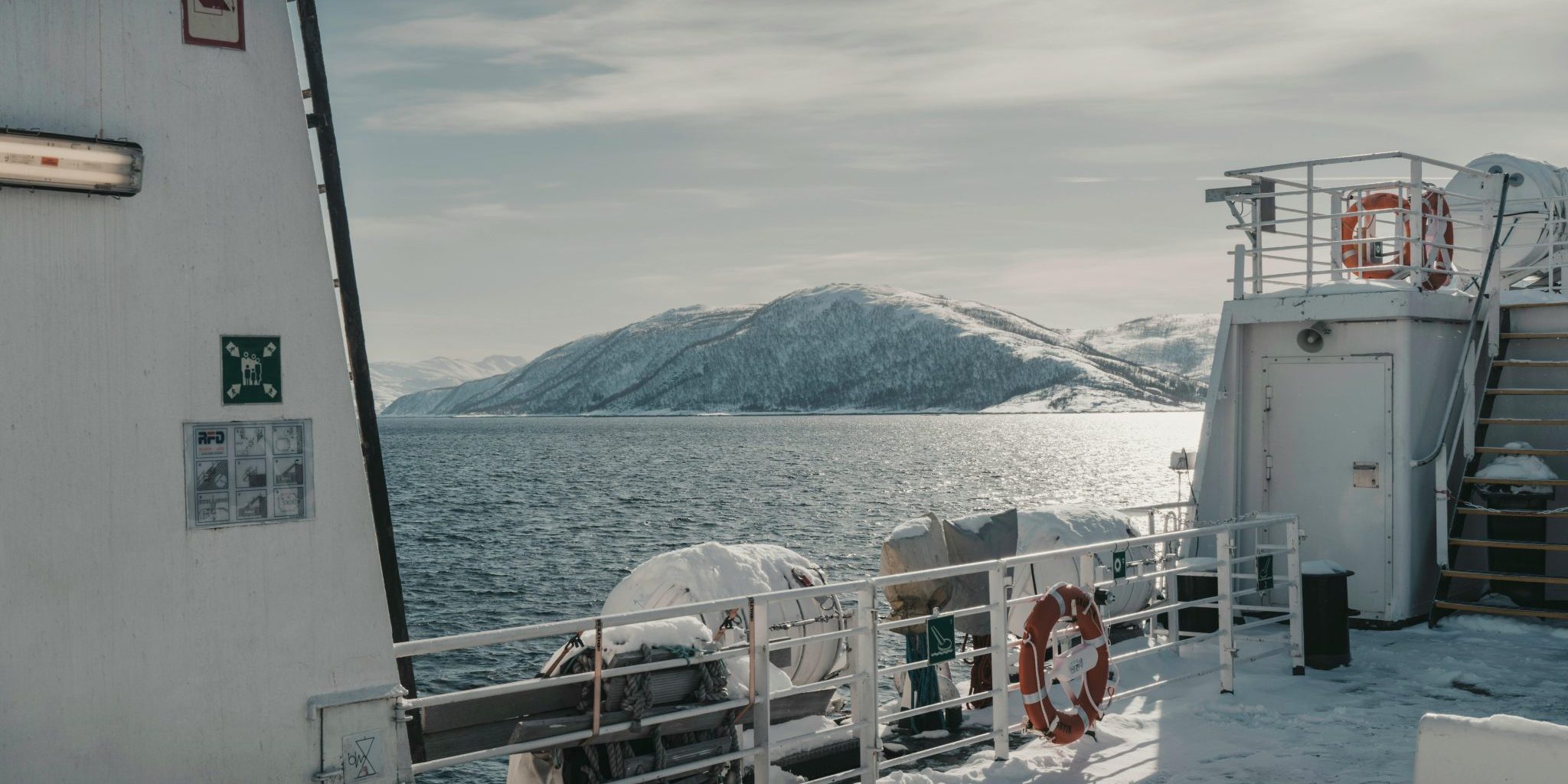Towards the North – A New Era in Maritime Logistics Research
The research focus of the Maritime Logistics Research Center is directed northwards – to where shipping meets the challenges of the Arctic, to the well-being of the Baltic Sea, and more broadly across the multifaceted domains of maritime transport. Our research is built on creating certainty for the future together with maritime cluster stakeholders, especially through new ways of thinking, sustainable development, and technological progress. Simulations, digital tools, and international cooperation are not only our instruments but also bridges to the future. Ports are at the heart of our research, and every partner we choose is a statement of values.

The North is calling
The Northern Seas form a new, demanding, and opportunity-rich operating environment. Climate change and geopolitical shifts are reshaping the maritime sector as a whole. Technology is advancing, new northern routes are opening to traffic, and the international maritime cluster is more eager to develop and innovate than ever before.
The development of ice-going vessels and the challenges of northern waters have created a need for new ship concepts: multipurpose icebreakers, hybrid ships, smart shipping, navigation, electric vessels, and, more broadly, innovations that improve sustainability and safety. These are areas where our research center can contribute meaningfully to both business and regional development.
The Northwest Passage, the Transpolar Sea Route, and the Northern Sea Route shorten shipping distances between ports. Their use requires new planning and learning, with updated simulation technologies and fresh perspectives in education. The Maritime Logistics Research Center is eager to take part in these developments and to grow its expertise.
Ice condition simulation, operational training, and the resulting decision-making are key aspects of risk management for shipping and port operators. Research is becoming increasingly international, with cooperation extending among Baltic Sea nations and across continents and maritime regions.
Sustainable maritime logistics
The northern orientation is a vision for the future: the central role of ports is emphasized, but environmental issues and sustainable development must remain at the forefront of research. Advancing technology, cooperation, and comprehensive responsibility go hand in hand. Step by step, we move forward – together.
Logistics and resilience-building are part of an expanding technological system where cooperation, the environment, actors, needs, producers, and clients all converge. The economic and geopolitical significance of logistics continues to grow. Maritime freight flows still account for the majority of transported goods worldwide.
Logistics towards or through the North requires precise weather monitoring. Ice condition analysis, knowledge of the operating environment, enhanced crew competence, and resilience-building are leading research themes. Simulations and their applications, such as data collection and analysis, are crucial tools for generating new knowledge and for adding educational value. Cybersecurity is its own domain, with major future research topics also within maritime logistics.
The more we learn about the operating environment, the more we need cross-disciplinary research conducted together with experts from various fields, while also addressing the educational needs inherent in a changing infrastructure.
Northern ports are still sparse and partly at the mercy of weather conditions. Investments in ports, capacity-building, and the development of storage and port-centered automated logistics will become prominent research topics. Ports are hubs of maritime traffic, and their functionality and safety are matters of shared responsibility. In Finland, ports such as Oulu, Kemi, Kokkola, Raahe, and Vaasa – along with those located further south – play an increasing role in securing regional northern maritime logistics, given our location at the intersection of East and West and at northern latitudes.
Technology and the future
The development of autonomous vessels and automated ports reflects Finnish expertise, whose importance is growing regionally and internationally. Low-emission ships, new fuels, and advancing battery and storage technologies are creating an expanding platform for research in the near future.
What changes will AI bring to route planning and logistics in the future? Will every ship be provided with alternative routing? Can autonomous vessels be programmed to divert to another port? Could ports themselves, at least in part, become mobile charging stations, and in emergencies allow material flows to be shifted onto roads from any point of landing? In disruption scenarios, AI-generated solutions for alternative routes offer opportunities. The use of sensors and machine intelligence for monitoring ice conditions, assessments, and decision-making marks a major technological leap forward.
The cold of the North raises hot questions for us all. Security of supply is a central theme in the development and research of maritime technology and logistics. Leveraging the northern dimension ties directly to safety, preparedness for emergencies, and the operational capacity of societies. Comprehensive preparedness is an essential part of resilience, and as a research center, we can contribute with multidisciplinary methods. Uncertainty has become the new normal, for us as well.
Northern nature is precious, and it is a value-based choice to let ecosystems grow and develop cleanly and safely. The advancement of logistics must never come at the cost of nature. Low emissions and environmental impact assessment must be built into every new Arctic project. One opportunity of research is to find ways to pass on knowledge and expertise to future generations in line with sustainable development principles.
The world is changing, and the northern dimension presents a new opportunity – for the international community as a whole, and for us at the Maritime Logistics Research Center of Satakunta University of Applied Sciences.
Author
Katri-Piia Rajala
Head of Research, Maritime Logistics Research Center, SAMK
